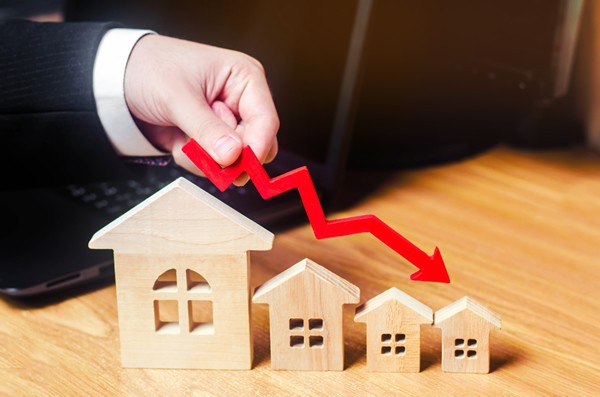House Prices Down 0.5% in June, Marking the Year’s First Decline

For the first time this year, average property prices in the UK have fallen. Newly published figures from the Halifax House Price Index suggest that house prices declined by approximately 0.5% in June, taking annual house price inflation to 8.8% compared to the 9.6% recorded in May.
But even with this fractional fall, average house prices remain more than £21,000 higher than they were at the same time in 2020. The report from Halifax speaks of a “broadly unprecedented period of gains,” triggered in part by a major spike in demand prompted by the temporary stamp duty holiday.
Strong performance in Wales and Northern Ireland
The fastest average house price growth was once again recorded in Wales at around 12%, its strongest performance in 15 years. Northern Ireland and the Northwest of England also performed strongly with 11.5% growth, followed by Yorkshire and Humberside with 10.9%. Average house prices in Scotland were also up a huge 10.4% year-on-year.
Meanwhile, much slower growth was recorded in the South of England and Eastern England, with inflation rates hovering around 7%. House price inflation of just 2.9% year-on-year was recorded in Greater London, which has recently seen record numbers of movers and buyers exiting for less densely populated regions of the UK.
Minimal stamp duty liability for most homebuyers
For the time being, the vast majority of homebuyers in England and Northern Ireland will continue to face significantly reduced stamp duty obligations.
“With the stamp duty holiday now being phased out, it was predicted the market might start to lose some steam entering the latter half of the year, and it’s unlikely that those with mortgages approved in the early months of summer expected to benefit from the maximum tax break, given the time needed to complete transactions,” said Russell Galley, managing director at Halifax.
“That said, with the tapered approach, those purchasing at the current average price of £260,358 would still only pay about £500 in stamp duty at today’s rates, increasing to around £3,000 when things return to normal from the start of October.”
Mr Galley went on to credit the government for introducing a raft of initiatives for home buyers, though he suggested that the market’s current momentum cannot be sustained indefinitely.
“Government support measures over the last year have helped to boost demand, particularly amongst buyers searching for larger family homes at the upper end of the market. Indeed, the average price of a detached home has risen faster than any other property type over the past 12 months, up by more than 10%, or almost £47,000 in cash terms. At a cost of over half a million pounds, they are now £200,000 more expensive than the typical semi-detached house,” he said.
“That power of home movers to drive the market as people look to find properties with more space, spurred on by increased time spent at home during the pandemic, won’t fade entirely as the economy recovers. Coupled with buyers chasing the relatively small number of available properties and continued low borrowing rates, it’s a trend that can sustain high average prices for some time to come.”
“However, we would still expect annual growth to have slowed somewhat more by the end of the year, with unemployment expected to edge higher as job support measures unwind and the peak of buyer demand now likely to have passed.”




 0116 402 7982
0116 402 7982